Table of Contents
Huperzine-A (Hup-A) is a water-soluble alkaloid nootropic derived from Chinese Club Moss (Huperzia serrata). This plant is native to southeast Asia. And has been used in traditional medicine for millennia to treat skin conditions, muscle problems and to boost blood circulation.
Huperzine-A is a reversible natural acetylcholinesterase inhibitor (AChE). Which means it prevents the breakdown down of acetylcholine (ACh). Boosting short-term memory and long-term brain health. But will stop its action on acetylcholine as soon as you stop using it.
Huperzine-A also seems to be a NMDA receptor antagonist. Which is beneficial in that it prevents an excess of glutamate from damaging brain cells.
Huperzine-A helps:
- Neurotransmitters: Huperzine-A prevents the enzyme AChE from breaking down acetylcholine. Improving cognition and memory.
- Brain Energy: Huperzine-A supports brain cell mitochondria. The primary energy sources fueling brain cells and brain cell function.
- Neuroprotectant: Huperzine-A works as an antioxidant and boosts the activity of other brain antioxidants. Preventing free radical damage and induced oxidative injury. And boosting brain cell longevity.
Overview
Huperzine-A (Hup-A) is a water-soluble natural plant alkaloid nootropic that easily crosses the blood-brain barrier.
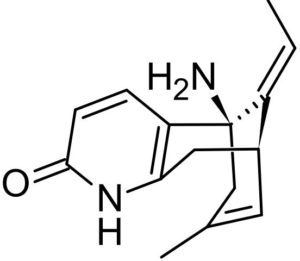
Hup-A is derived from Chinese Club Moss (Huperzia serrata). A plant native to southeast Asia where it’s been used in traditional medicine for thousands of years.
Huperzine-A has a strong inhibitory effect on acetylcholinesterase (AChE). This enzyme AChE, is responsible for degrading the neurotransmitter acetylcholine (ACh).
Boosting levels of acetylcholine (ACh) transmission in your brain improves memory and attention. And promotes greater neuroplasticity which is necessary for long-term memory formation and general brain cell health.
Huperzine-A is also a NMDA receptor antagonist. This glutamate receptor’s job is to control synaptic plasticity and memory function. Which is a positive thing. But blocking its function can also be effective at times. By preventing damage from too much glutamate. And blocking the toxicity from certain nerve agents.[i]
This combination of boosting acetylcholine and blocking NMDA receptors requires a fine balance. And could explain why it’s beneficial to cycle the use of Huperzine-A. To maintain the delicate balance of neurochemistry in the brain while realizing Huperzine-A’s benefits.
Huperzine-A vs. Huperzia serrata: What’s the Difference?
 Huperzine-A (Hup-A) is produced in the lab from Huperzia serrata (a natural Chinese Herbal Medicine called Chinese Club Moss). Huperzine-A is a standardized compound found in this naturally occurring plant.
Huperzine-A (Hup-A) is produced in the lab from Huperzia serrata (a natural Chinese Herbal Medicine called Chinese Club Moss). Huperzine-A is a standardized compound found in this naturally occurring plant.
Note that Huperzine-A and Huperzia serrata are NOT the same supplement.
Some nootropic supplement stacks substitute genuine Huperzine-A with Huperzia serrata. All the research I’ve seen uses Huperzine-A in their clinical trials. Not Huperzia serrata.
Look for a supplement with genuine Huperzine-A on the label. And avoid stacks or supplements that use Huperzine serrata.
How does Huperzine-A Work in the Brain?
Huperzine-A boosts brain health and function in several ways. But two in particular stand out.
- Huperzine-A acts as an acetylcholinesterase inhibitor. Acetylcholinesterase (AChE) is an enzyme that breaks down the important neurotransmitter acetylcholine once it’s used in your system. So Hup-A helps prevent this breakdown. Allowing more acetylcholine to be available which improves learning and memory.
Scientists at the Weizmann Institute in Israel uncovered how Huperzine-A works to block this novel acetylcholinesterase inhibitor. They made a 3-D image of the structure of the AChE molecule. And found a deep chasm, called the “active-site gorge”.
The scientists found the active-site gorge acts like a guide to funnel acetylcholine into the interior of the enzyme where it is cut apart prior to recycling. This is how AChE blocks acetylcholine from being eliminated.
The study revealed that Huperzine-A has the unique ability to fit into this active-site gorge. Like a key into a lock. And appears to bind more tightly and specifically to AChE than other AChE inhibitors.
This ability for Huperzine-A to take acetylcholine’s place within the AChE enzyme is how more acetylcholine is made available in the brain.
Professor Joel Sussman said, “It is as if this natural substance were ingeniously designed to fit into the exact spot in AChE where it will do the most good.”[ii]
- Huperzine-A also plays a neuroprotective role. Researchers discovered that Hup-A prevents glutamate-induced toxicity. Protecting the hippocampus and other cerebral neurons from cell death caused by the amino acid glutamate.[iii]
In addition to protecting from glutamate-induced toxicity, Huperzine-A also promotes new dendrite growth in neurons.[iv]
How things go bad
As we get older, our brain chemistry and metabolism changes.
↓ Acetylcholine levels decline
↓ Concentration, attention and mental agility decline
↓ Nerve growth factor declines
↓ Free radicals damage brain cell mitochondria
All of these changes can happen at any age. And are a product of the food we eat, what we drink, lifestyle habits, the air we breathe and more.
So Huperzine-A can help for age-related cognitive decline, as well as a student looking to do better in school. By boosting the availability of acetylcholine in your brain.
Huperzine-A benefits
Huperzine-A boosts acetylcholine
Huperzine-A boosts levels of available acetylcholine in the brain by blocking the effect of the enzyme acetylcholinesterase (AChE).
Acetylcholine (ACh) is critical for encoding new memories, reasoning, concentration, cognition, and neuroplasticity. Not enough ACh can result in diseases like ADHD, Alzheimer’s and other neurodegenerative diseases.
Huperzine-A’s benefit as a nootropic can boost short-term mental function like attention and memory. And even helping your brain for long-term brain health.
Huperzine-A is an antioxidant
Huperzine-A supports brain cell mitochondria. The main energy centers of each cell. It reduces free radical damage by acting as an antioxidant. Free radicals degrade mitochondria and their function. Studies have shown that Hup-A enhances the activities of other antioxidant enzymes as well.[v]
Huperzine-A resists beta-amyloid dysfunction
Huperzine-A boosts neuron resistance to beta-amyloid induced dysfunction that could lead to diseases like Alzheimer’s. Beta-amyloid affects ATP levels in mitochondria. Hup-A protects against this damage.[vi]
Huperzine-A prevents glutamate toxicity
Huperzine-A protects brain cells from glutamate toxicity. Too much of the neurotransmitter glutamate has been associated with brain cell degeneration. And other cognitive dysfunction and behavior. Hup-A seems to slow down this glutamate toxicity at least partly by acting as a NMDA receptor ion channel antagonist.[vii]
Huperzine-A increases nerve growth factor
Huperzine-A boosts nerve growth factor (NGF) in the brain. NGF is critical in brain cell development, maintenance and repair. Declines in NGF-levels in the brain are associated with Alzheimer’s and other neurodegenerative diseases. Studies show Hup-A not only prevents this drop in NGF from happening. It actually helps boost the production of NGF.[viii]
How does Huperzine-A feel?
Nootropics users report Huperzine-A provides a boost in mental energy. Without the side effects normally associated with a stimulant.
Improved cognition and clear thinking are common when using Hup-A. Many report a boost in short-term memory. Recall is better in the long-term.
And some with Alzheimer’s report the progression of the disease slows down. Instead of advancing.
You should be able to experience the effects of Huperzine-A soon after you take it. It’s water-soluble so it’s digested and enters your cells quickly.
One thing to note is; Huperzine-A has a long half-life of 10 – 14 hours. In other words, it does not leave your system nearly as quickly as most other nootropics. So many neurohackers restrict their use of Hup-A to 2 or 3-times per week.
Huperzine-A Clinical Trials and Research
Huperzine-A is most known for boosting acetylcholine (ACh) in the brain. Efficient ACh neurotransmission is critical for learning, memory and attention.
Reduced levels of ACh can cause cognitive deficits like a decline in memory. And are implicated in several neurodegenerative diseases including Alzheimer disease, Parkinson’s, ALS and others.
Huperzine-A supplementation helps even in those with no sign of brain disease. It can enhance attention and memory in most looking to boost cognition.
Huperzine-A Provides Protection in Chemical Warfare
If you ever find yourself in a war-zone, you may want to stock up on Huperzine-A.
Researchers at the Walter Reed Army Institute of Research in Washington D.C. are investigating Huperzine-A’s potential as a pretreatment to protect soldiers against chemical warfare nerve agent toxicity.
One of the studies conducted at Walter Reed looked at Huperzine-A’s protective potential. Scientists found Hup-A to be twice as effective in protecting against the lethal effects of the nerve agent soman as the leading drug in that role called physostigmine. Huperzine-A’s effects lasted for six hours compared to only 90 minutes for the drug.[ix]
Huperzine-A Improves Learning & Memory
This study is verification of using Huperzine-A as a nootropic at any age. Researchers in China selected 68 students who complained of bad memory. And their learning performance was getting worse in school.
In this double-blind, placebo-controlled trial students were given either 100 mcg of Hup-A or a placebo for 4 weeks.
At the conclusion of the trial, researchers found that the students using Huperzine-A scored higher on memory testing than those who took the placebo.[x]
Huperzine-A Improves Cognition
Much of the research on Huperzine-A has been done in China. And many of the studies have been with patients suffering from neurodegenerative diseases like Alzheimer’s.
In one of the randomized clinical trials done in Shanghai, researchers worked with 200 patients who met the criteria for having Alzheimer Disease therapy. Researchers gave one group of patients 300-500 mcg of Hup-A daily for 8 – 24 weeks. The other group got a placebo.
The results of the study showed that Huperzine-A’s effects increased over time. The patients that used Hup-A showed significant improvements in cognition, orientation, attention, memory, mood, and assisting participants with vascular dementia.[xi]
Huperzine-A Recommended Dosage
Recommended Huperzine-A dosage is 50 – 200 mcg every second or third day. Hup-A is water-soluble so you don’t need to take it with a meal, or healthy fat like some nootropics.
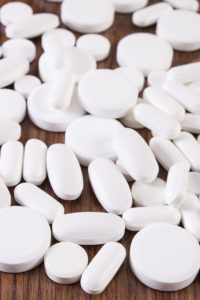 Huperzine-A is typically sold as 50, 100, or 200 mcg tablets or capsules. Several retail nootropic stacks often include Huperzine-A in their formula. So you should not supplement with more Hup-A while using these pre-made stacks.
Huperzine-A is typically sold as 50, 100, or 200 mcg tablets or capsules. Several retail nootropic stacks often include Huperzine-A in their formula. So you should not supplement with more Hup-A while using these pre-made stacks.
Since Huperzine-A has at least a 10 – 14 hour half-life most neurohackers prefer cycling. This means using Hup-A every 2nd day, or even only twice per week.
Huperzine-A is also available as an injection for therapeutic use. Typically used for the treatment of Alzheimer’s disease. Or the muscle weakness condition called myasthenia gravis.
Huperzine-A Side Effects
Huperzine-A can be toxic if used in larger than recommended doses. Or if you already have too much acetylcholine(ACh) in your system. Remember, Hup-A boosts levels of ACh.
Side effects with Huperzine-A are rare but can include symptoms similar to choline-overload like nausea, vomiting, diarrhea, insomnia, anxiety, dizziness, thirst and constipation.
Very rarely will Huperzine-A cause cardiac arrhythmia.
If you are dealing with kidney disease you should avoid using Huperzine-A.
Symptoms of acute toxicity are similar to those of other cholinergic inhibitors. And can include muscle tremors, drooling, tears, bronchial mucous and incontinence.
Do not use Huperzine-A if you’re dealing with epilepsy. And if you have heart disease, use Hup-a with caution. It can slow heart rate.
Huperzine-A may make asthma or emphysema worse. Because it can cause mucous in the lungs. The same goes for those dealing with urinary tract or reproductive system blockages. It can cause mucous buildup there as well.
An important note for Alzheimer’s patients: Huperzine-A can increase the effects of drugs you may already be taking. Talk to your doctor before trying Hup-A.
Types of Huperzine-A to Buy to Enhance Cognitive Function
Huperzine-A is sold in tablet or capsule form. Tablets and capsules are usually 50 – 200 mcg each.
Be careful with pre-made nootropic stacks containing Huperzine-A where the manufacturer recommends daily use. Because Huperzine-A should only be used every 2nd or 3rd day because of its 10 – 14 hr. half-life.
Huperzia serrata is simply raw, powdered Chinese Club Moss and should be avoided. It’s not standardized so you don’t know how much you’re getting. And it’s NOT the same as Huperzine-A.
Nootropics Expert Recommendation
Huperzine-A 200 mcg every 2nd or 3rd day
 I recommend using Huperzine-A as a nootropic supplement with caution.
I recommend using Huperzine-A as a nootropic supplement with caution.
Your body does not make Huperzine-A on its own. So to get its benefits you must take it as one of your dietary supplements.
Huperzine-A is especially helpful for those suffering from cognitive dysfunction caused by diseases like Alzheimer’s.
Huperzine-A is also particularly useful to students and executives who want to boost cognition, learning and memory.
Huperzine-A is a fast-acting nootropic that can also help prevent brain degeneration later in life.
Huperzine-A does have a long 10 – 14 hr. half-life so you should cycle it. Either take it every 2nd day, or even twice per week. The benefits are long-lasting and will stay with you.





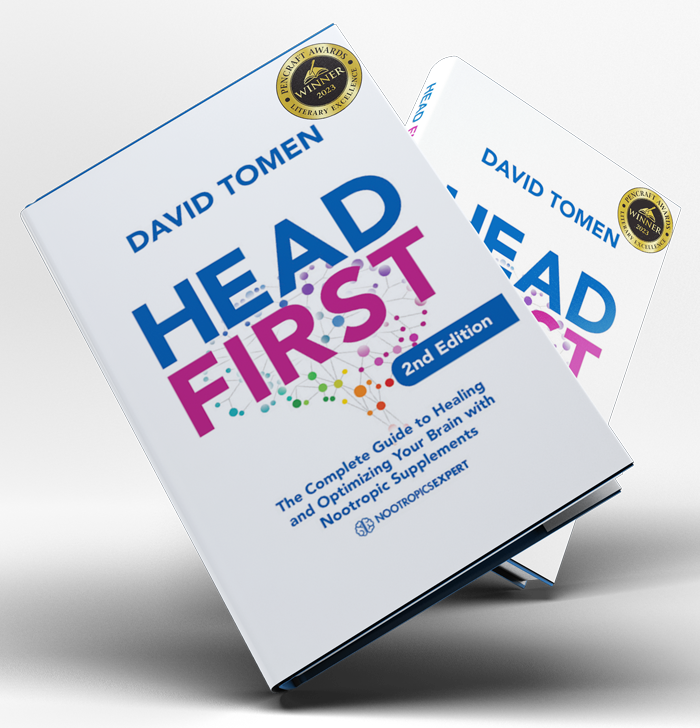
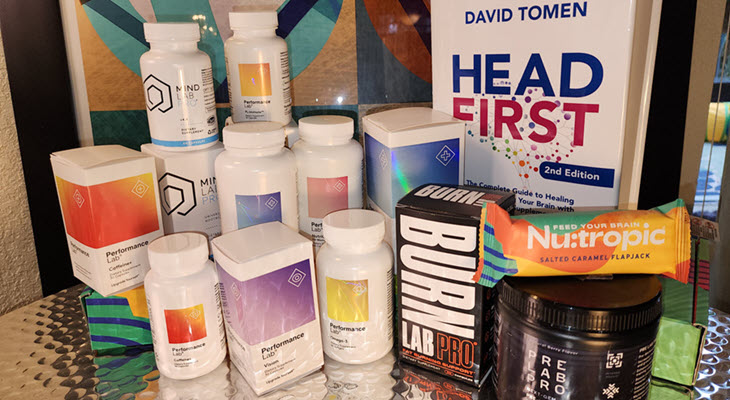

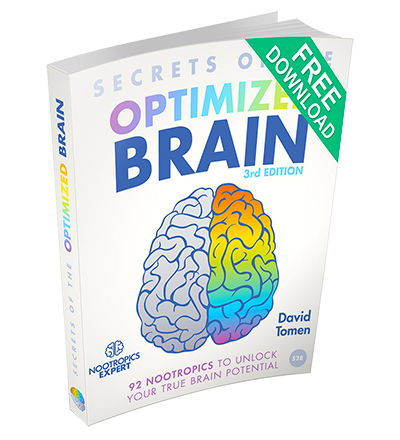
Join The Discussion - 232 comments
马云马化腾
July 1, 2025
Is huperzine A taken every 2 days or every 3 days? Is there a combination that can improve dynamic vision and reaction speed in FPS games? Is the improvement limited to the genetic ceiling, allowing genes to perform better?
David Tomen
July 1, 2025
Huperzine-A can be used long-term if taken every 2nd day. For improving your vision and reaction speed I suggest reading my article on Best Nootropics for Gaming and eSports here: https://nootropicsexpert.com/best-nootropics-for-esports-gaming/
Susan
June 2, 2025
What is the best brand for Huperzine A that does not have dextrin or other fillers in it? The brand that you mentioned, some reviewers say it’s not the same ingredients on the label anymore and it’s a different, not such a great product now. Maybe they are cutting corners?
David Tomen
June 2, 2025
Susan, try this one: https://geni.us/qFzj
Chari
March 24, 2025
Where can Huperzine-A be purchased
David Tomen
March 26, 2025
Chari, you can get Huperzine-A here: https://geni.us/dYBA (Amazon)